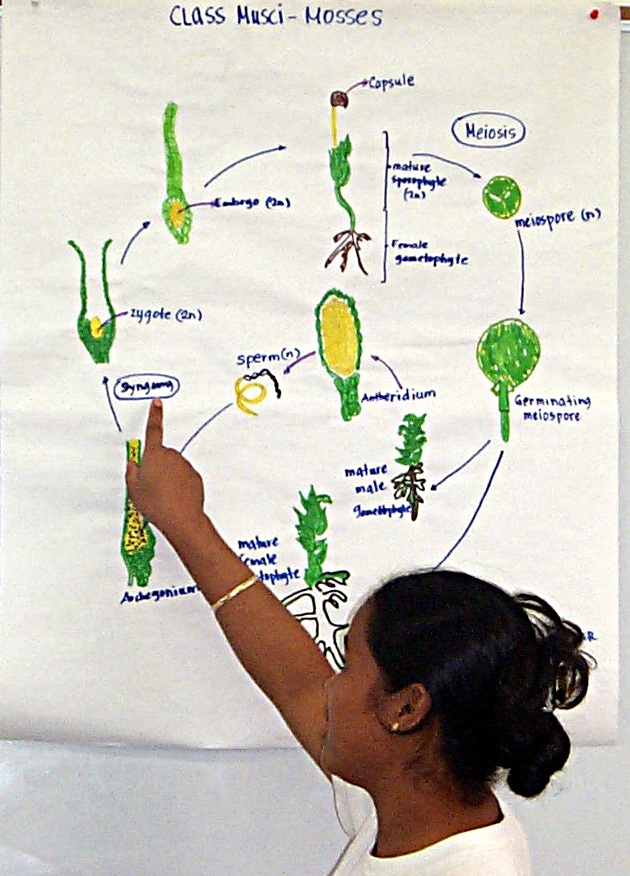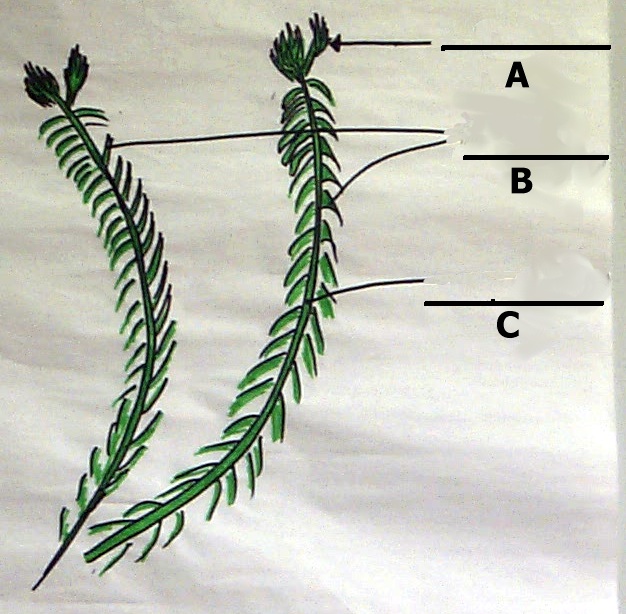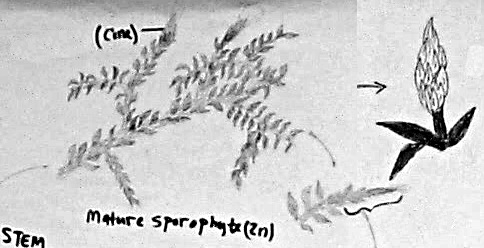SC/SS 115 Ethnobotany Spring 2004 Test One Name:______________
 In the image shown the process of syngamy is being indicated by the student. What is occurring in this portion of the moss reproductive cycle?
In the image shown the process of syngamy is being indicated by the student. What is occurring in this portion of the moss reproductive cycle?
- Fertilization
- Growth of a gametophyte
- Implantation of the spore in a new location
- Spreading of the moss via air
- Circle the element(s) involved in reproduction for cyanobacteria:
- Akinetes
- Eggs
- Flowers
- Pollen
- Seeds
- Sperm
- Spores
- Water
- What is the name of the cell in cyanobacteria that converts nitrogen (N2 gas) into nitrogenous compounds?
- Label the parts in the image:

- __________
- __________
- __________
- Why would none of the plants we've studied so far grow in a desert?
- Put the following into order from the botanically most "primitive" to most "evolved":
angiosperms, cyanobacteria, ferns, gymnosperms, lycopodium, mosses.
- Mosses are unusual among plants in that the green part we see is haploid. All other plants we encounter in this course are diploid. What do the terms haploid and diploid mean?
- Can we tell by looking the difference between male and female moss plants?
- Where can I find Nostoc?
- What is the name, in your language, of the green slime balls that are found on rocks in the lawn, the one which dries up and turns black in the sun?
- What is the meaning of the Pohnpeian word for the green slime balls that are found on rocks in the lawn, the one which dries up and turns black in the sun?
- The Kosraen word lum refers to which plants we have seen?
- Give one local use for the "christmas tree" plant, Lycopodiella cernua found on sunny hilltops in Palikir (either in your own culture or another culture)?
- What is a local use here on Pohnpei for the Nephrolepis fern, the fern the Pohnpeians call rehdil?
- What is the scientific name for the cone structures in lycopodium and selaginella?

- Short essay: The mosses, lycopodium, and ferns we have been studying are united by some common features. What are those common features?
 In the image shown the process of syngamy is being indicated by the student. What is occurring in this portion of the moss reproductive cycle?
In the image shown the process of syngamy is being indicated by the student. What is occurring in this portion of the moss reproductive cycle?
